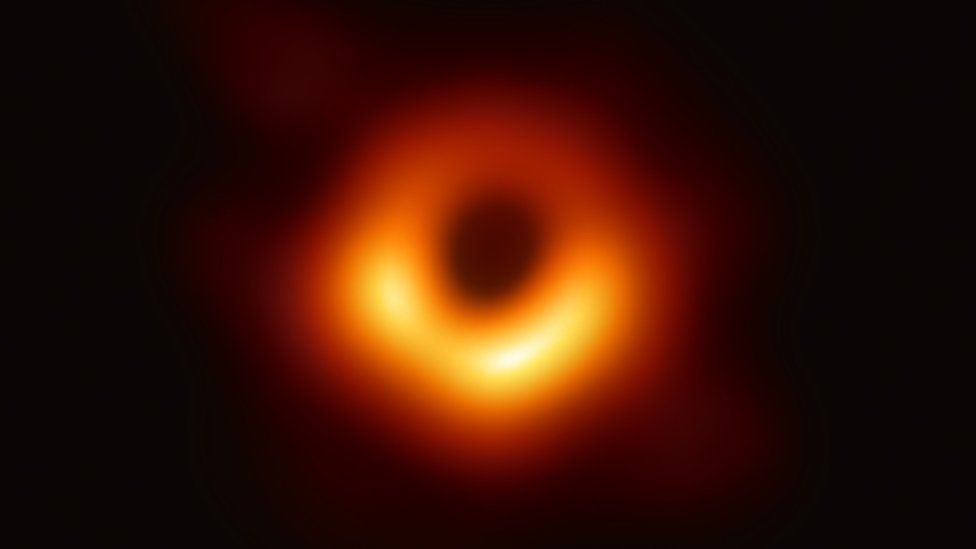The first black hole caught on camera
Astronomers have captured a black hole on camera for the first time ever.
The hole in the image is located in a distant galaxy called M87, over 500 million trillion km away.
Scientists described is as a 'monster' at 40 billion km wide.
That's over three millions times the size of Earth.
Speaking to BBC News Professor Heino Falcke said, "What we see is larger than the size of our entire Solar System."
"It has a mass 6.5 billion times that of the Sun. And it is one of the heaviest black holes that we think exists. It is an absolute monster, the heavyweight champion of black holes in the Universe."

Surrounding the black hole is a bright ring of fire caused by super heated gas falling in.
This fire is brighter than all of the stars in the galaxy combined, and is the reason we can see the spectacle from so far away.
Ironically, black holes are the darkest parts of our universe.
They have such a strong gravitational pull that not even light can escape.
Einstein correctly predicted how black holes would appear
According to Dr. Ziri Younsi the black hole matches what scientists had imagined one to look like.
"Although they are relatively simple objects, black holes raise some of the most complex questions about the nature of space and time, and ultimately of our existence," he said.
"It is remarkable that the image we observe is so similar to that which we obtain from our theoretical calculations. So far, it looks like Einstein is correct once again."

The project dreamed up by Professor Heino Falcke of Radboud University has been 20 years in the making.
After arguing his case for two decades he was granted funding by The National Science Foundation and the Europe Research Council.
Speaking again to The BBC Falcke said, "It has been a long journey, but this is what I wanted to see with my own eyes. I wanted to know is this real?"
Too much data to fit on the internet
The photo took a team of 200 scientists and eight telescopes to capture.
The data obtained was too large to fit on the internet so was transported on hard drives.
Prof Doeleman described the achievement as "an extraordinary scientific feat".
He said, "We have achieved something presumed to be impossible just a generation ago."












